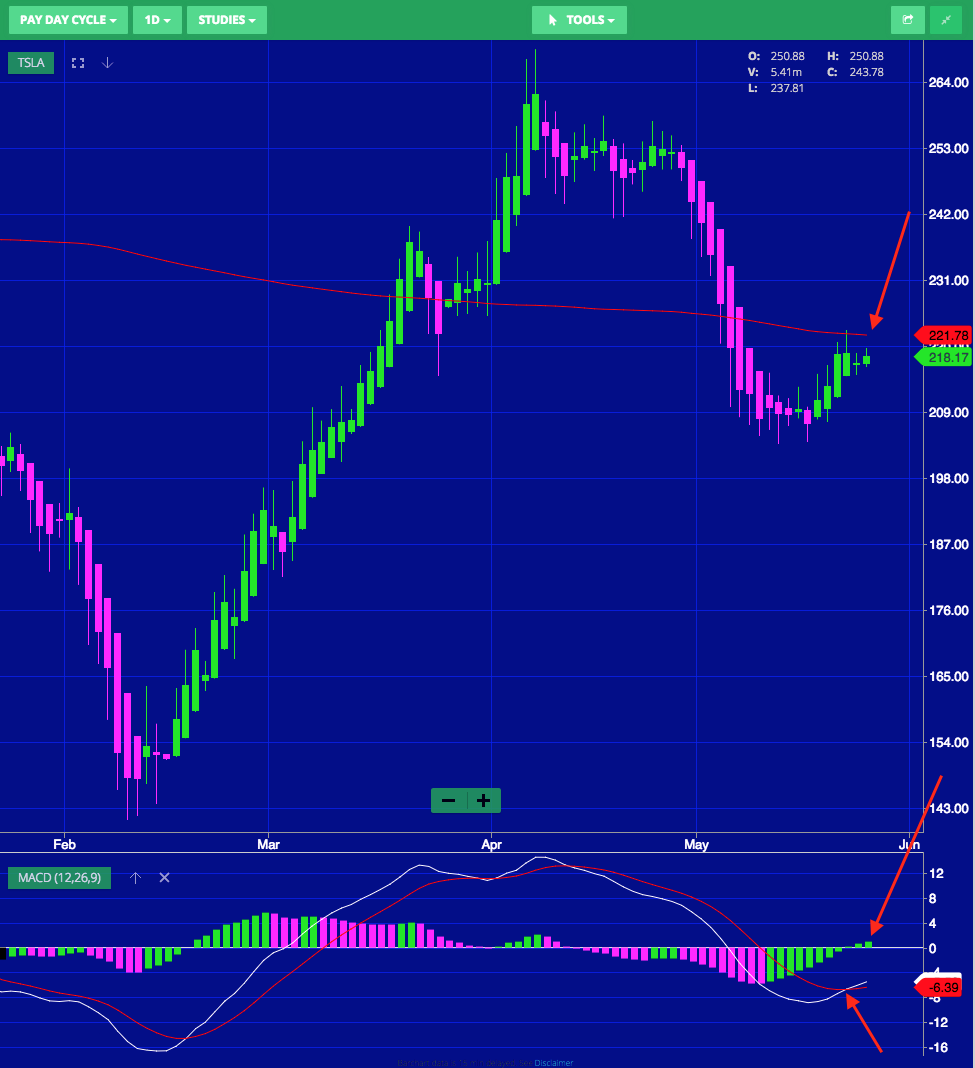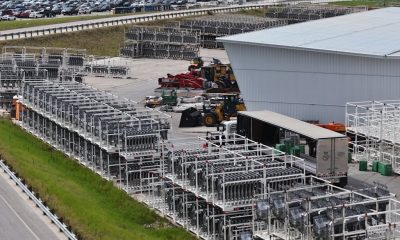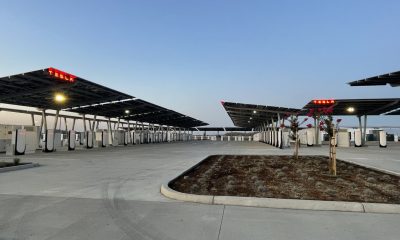Investor's Corner
Debunking the story that Elon Musk “kept cash” from the recent stock offering
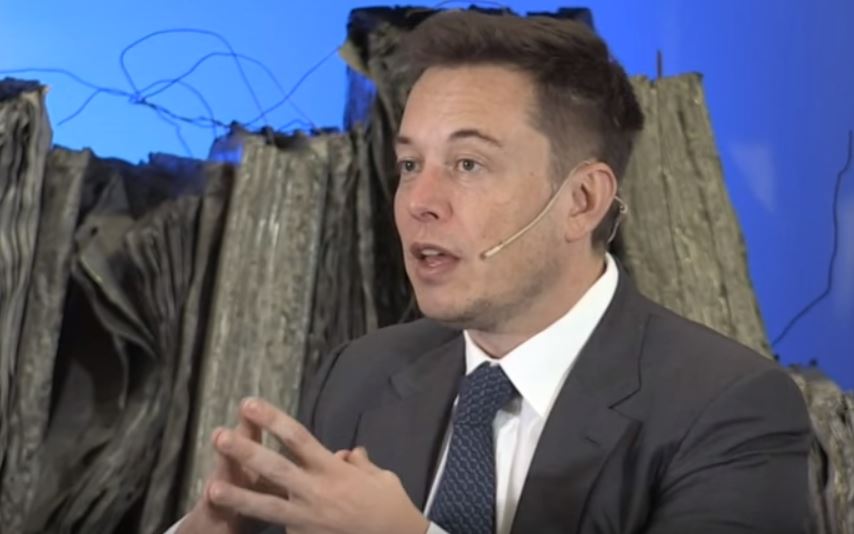
On Monday May 23, 2016, Tesla Motors e-mailed to TSLA registered investors a link to Elon Musk’s Form 4 SEC Filing, a.k.a. the Statement of Changes in Beneficial Ownership, detailing the transactions that are part of the recent stock offering that relate to Elon Musk.
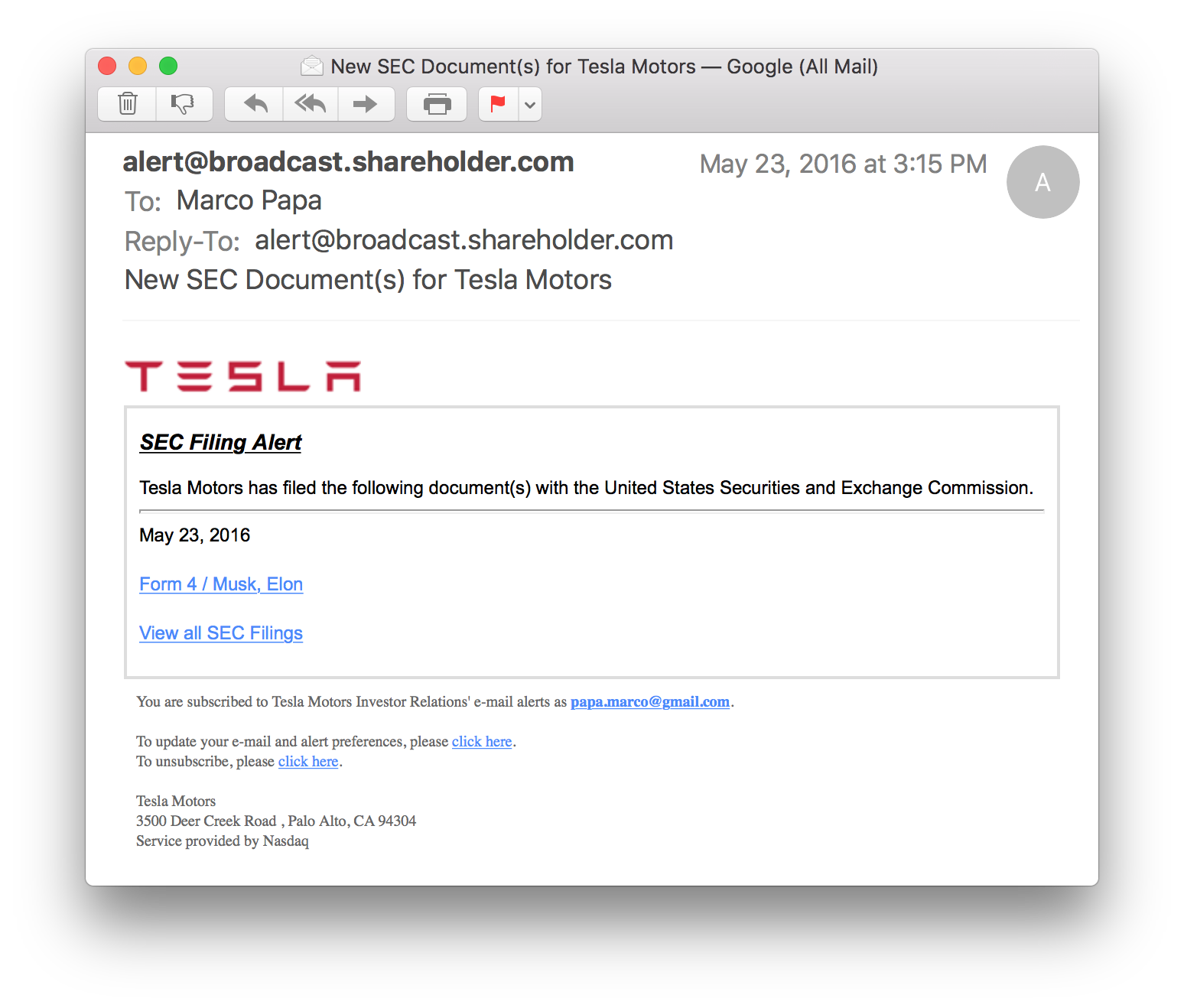
Source: Tesla Motors
The Form is available also at Tesla Motors Investors website.
I will go through the major details shown in the form to understand how the transactions were executed. For the inquiring minds, the various SEC codes listed in FORM 4 can be found here.
First an assumption: prior to the offering and the changes in beneficial ownership of the listed securities, Elon Musk held 29,579,342 shares of stock in TSLA.
The first and second transactions (Table I, column 1, line 1 and 2) report the exercise of stock options (options that were awarded to Elon in previous years as part of a Non-Qualified Stock Options plan) to acquire 5,503,972 shares of Tesla’s common stock (2,147,986 + 3,355,986 shares). The options were originally awarded at $6.63, and Elon paid $36,491,334 or about $36 million to exercise them. After this purchase, Elon owned at total of 35,083,314 shares (Table I, column 5, line 2).
While the original offering was supposed to be priced at about $204 per share, the eventual offering price was raised to $215 per share. At the $215 stock value at the time of the offering, the value of the acquired shares was a whopping $1.18 billion!
Before actually paying for the option exercise transactions, Elon did two things.
First it disposed of 1.2 million shares as a “bona file gift to charity” (Table I, line 3 and Explanation of Responses (3)). This gift reduced Elon’s shares down to 33,883,314 shares (Table I, column 5, line 3).
Second, Elon disclosed that he intended to sell 2,782,670 of the purchased shares in the “registered offering solely in order to pay income tax related to these stock option exercises” (see Explanation of Responses (2) in FORM 4). The sale reduced Elon’s shares further down to 31,100,644 shares. At $215 / share, Elon Musk’s Tesla shares are worth a bit over $13 billion.
Interestingly, if these were Incentive Stock Options (ISO), the ones usually awarded to Executives, vs. Non-qualified Stock Options (NSO), usually awarded to regular employees, these options would have received special federal tax treatment, and there would be no taxable event reported at exercise, except for any exercised shares that were sold immediately after the exercise. But as one can see in Table II, Elon received “non-qualified stock options” like any other employee, that do not qualify for special tax treatment.
The gain or “bargain element” in a stock option exercise is calculated by subtracting the exercise price ($6.63) from the market price ($215) of the company stock on the date the option is exercised. So the gain per share is $208.70. The total bargain element (gain) in the options exercise transactions is $1,148,679,000 or about $1.14 billion, which is the “taxable gain.”
For the 2,782,670 shares that Elon sold in the registered offering, Elon collected $598,274,050 or about $580 million after accounting for the price paid for the shares. Since these shares were sold immediately after exercise, the gain will be reported as a short-term capital gain and will be subject to tax at ordinary income tax rates. Assuming 39.6% ordinary federal income tax rate, and a 12.30% top individual rate for California, Elon would have to pay $596 million in tax, or 51.9% of the “taxable gain.”
Notice that the $580 and $596 million numbers above are close enough for the company to state in the FORM 8-K filing that “Mr. Musk will owe a significant amount of taxes from exercising these stock options and will fund this task obligation by selling only the amount of shares needed to do so.”
But we are not done. The rest of the stock exercised by Elon Musk, 2,731,302 shares, can be treated as long-term capital gain (with better tax treatment, likely at the 20% long-term capital gain rate, rather than at the 39.6% personal income tax rate) if the stock is held for 12 months after exercise. Assuming that Elon is smart (I think he is), he will wait, to get a combined Federal + California 32.3% tax rate, resulting in an additional $184 million in taxes (2,731,302 times $208.70 times 32.3%).
Finally, we need to consider the gift of 1.2 million shares of Tesla’s common stock given to charity (Table I, column 1, line 3). By donating shares, Elon avoids paying the capital gains tax, which would have to be paid if the shares were first sold and then the cash proceeds donated to charity.
Moreover, Elon can get a tax deduction for the current fair market value of the gifted shares. In general, the amount of the deduction is limited to 20%-30% of the adjusted gross income, but one can carry forward amounts above that for up to five years. Without knowing Elon’s adjusted gross income, it is difficult to guess what the deduction would amount to. The fair market value of the donated shares is $250 million. That would be the best case scenario for a charitable deduction, which is extremely unlikely, while 20% of the taxable gain is more likely ($218 million).
Summarizing the transactions:
- Cost of exercising options: $36 million
- Taxes on short-term capital gain for shares sold at offering: $596 million
- Taxes on long-term capital gains for shares held 12-months: $184 million
Total outlay: $ 816 million
- Registered offering sale: $580 million
- Gifted shares tax deduction (max): $250 million, (likely): $218 million
So after all is said and done, Elon will still owe Uncle Sam between $18 and $236 million. I have seen reports from “TSLA bears” (or TSLA haters, same thing) indicating that Elon would actually “keep cash” on this sale.
Obviously he does not, and I would expect that he would eventually have to sell a portion of the remaining $1.5 million (to be exact 1,521,302 shares) from the offering that Elon is not selling or donating to charity, to cover the additional tax, unless he’s got cash in the bank to pay for it.
This offering dilutes the total outstanding shares of TSLA with an additional 1.4 million from Tesla Motors and the 5.5 million from Elon Musk (for a total on 6.9 million new shares diluting the TSLA public pool of shares), while Elon adds about 1.5 million to his total, ending with about 31 million shares (to be exact 31,100,644). So Elon adds some shares but loses a bit in Tesla ownership percentage, from 26.2% to 22.7%.
Technical Analysis
Looking at this week TSLA action, we are now after my predicted breakout, looking at bullish pay-day-cycles (6 consecutive green Heikin Ashi bars), the MACD gone positive, and the MACD moving averages “crossed to the bulls”.
We are coming close to an important point: the stock price is advancing toward the 200-day moving average (around $221.90), which will act as “resistance”. If the stock fails to cross the 200-day moving average, it would usually move down and fast afterwards (“bounce” off the average); this morning it traded as high as $220.75 and “bounced”. If otherwise it eventually crosses the 200-day moving average, we will have an additional bullish indicator and the stock will be header for new tops.
I entered my option trades last week (Sept. 215 calls), before the breakout and have added and cashed in already once to take profits. I have also progressively moved up my conditional stop from 205, to 210 and 215, to protect my profits, and will likely move it even higher as the stock approaches the 221 level and tests the resistance. If the stock crosses the 200-day moving average, I will add again to my TSLA calls holdings, as I will have 4 bullish indicators flying high. Obviously not a good time for short sellers in $TSLA.
Investor's Corner
Two Tesla bulls share differing insights on Elon Musk, the Board, and politics
Two noted Tesla bulls have shared differing views on the recent activities of CEO Elon Musk and the company’s leadership.

Two noted Tesla (NASDAQ:TSLA) bulls have shared differing views on the recent activities of CEO Elon Musk and the company’s leadership.
While Wedbush analyst Dan Ives called on Tesla’s board to take concrete steps to ensure Musk remains focused on the EV maker, longtime Tesla supporter Cathie Wood of Ark Invest reaffirmed her confidence in the CEO and the company’s leadership.
Ives warns of distraction risk amid crucial growth phase
In a recent note, Ives stated that Tesla is at a critical point in its history, as the company is transitioning from an EV maker towards an entity that is more focused on autonomous driving and robotics. He then noted that the Board of Directors should “act now” and establish formal boundaries around Musk’s political activities, which could be a headwind on TSLA stock.
Ives laid out a three-point plan that he believes could ensure that the electric vehicle maker is led with proper leadership until the end of the decade. First off, the analyst noted that a new “incentive-driven pay package for Musk as CEO that increases his ownership of Tesla up to ~25% voting power” is necessary. He also stated that the Board should establish clear guidelines for how much time Musk must devote to Tesla operations in order to receive his compensation, and a dedicated oversight committee must be formed to monitor the CEO’s political activities.
Ives, however, highlighted that Tesla should move forward with Musk at its helm. “We urge the Board to act now and move the Tesla story forward with Musk as CEO,” he wrote, reiterating its Outperform rating on Tesla stock and $500 per share price target.
Tesla CEO Elon Musk has responded to Ives’ suggestions with a brief comment on X. “Shut up, Dan,” Musk wrote.
Cathie Wood reiterates trust in Musk and Tesla board
Meanwhile, Ark Investment Management founder Cathie Wood expressed little concern over Musk’s latest controversies. In an interview with Bloomberg Television, Wood said, “We do trust the board and the board’s instincts here and we stay out of politics.” She also noted that Ark has navigated Musk-related headlines since it first invested in Tesla.
Wood also pointed to Musk’s recent move to oversee Tesla’s sales operations in the U.S. and Europe as evidence of his renewed focus in the electric vehicle maker. “When he puts his mind on something, he usually gets the job done,” she said. “So I think he’s much less distracted now than he was, let’s say, in the White House 24/7,” she said.
TSLA stock is down roughly 25% year-to-date but has gained about 19% over the past 12 months, as noted in a StocksTwits report.
Investor's Corner
Cantor Fitzgerald maintains Tesla (TSLA) ‘Overweight’ rating amid Q2 2025 deliveries
Cantor Fitzgerald is holding firm on its bullish stance for the electric vehicle maker.
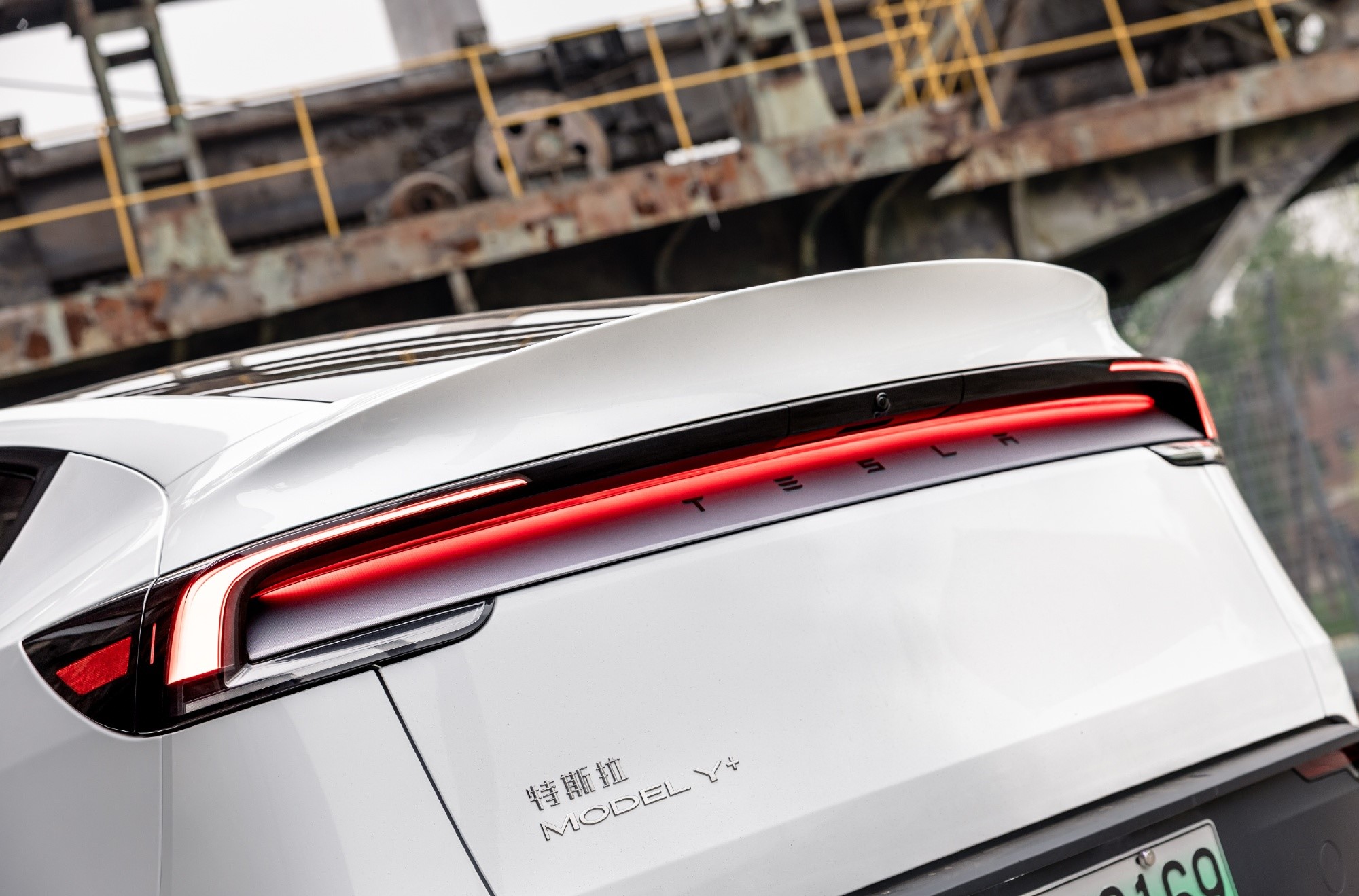
Cantor Fitzgerald is holding firm on its bullish stance for Tesla (NASDAQ: TSLA), reiterating its “Overweight” rating and $355 price target amidst the company’s release of its Q2 2025 vehicle delivery and production report.
Tesla delivered 384,122 vehicles in Q2 2025, falling below last year’s Q2 figure of 443,956 units. Despite softer demand in some countries in Europe and ongoing controversies surrounding CEO Elon Musk, the firm maintained its view that Tesla is a long-term growth story in the EV sector.
Tesla’s Q2 results
Among the 384,122 vehicles that Tesla delivered in the second quarter, 373,728 were Model 3 and Model Y. The remaining 10,394 units were attributed to the Model S, Model X, and Cybertruck. Production was largely flat year-over-year at 410,244 units.
In the energy division, Tesla deployed 9.6 GWh of energy storage in Q2, which was above last year’s 9.4 GWh. Overall, Tesla continues to hold a strong position with $95.7 billion in trailing twelve-month revenue and a 17.7% gross margin, as noted in a report from Investing.com.
Tesla’s stock is still volatile
Tesla’s market cap fell to $941 billion on Monday amid volatility that was likely caused in no small part by CEO Elon Musk’s political posts on X over the weekend. Musk has announced that he is forming the America Party to serve as a third option for voters in the United States, a decision that has earned the ire of U.S. President Donald Trump.
Despite Musk’s controversial nature, some analysts remain bullish on TSLA stock. Apart from Cantor Fitzgerald, Canaccord Genuity also reiterated its “Buy” rating on Tesla shares, with the firm highlighting the company’s positive Q2 vehicle deliveries, which exceeded its expectations by 24,000 units. Cannacord also noted that Tesla remains strong in several markets despite its year-over-year decline in deliveries.
Elon Musk
Tesla analyst issues stern warning to investors: forget Trump-Musk feud

A Tesla analyst today said that investors should not lose sight of what is truly important in the grand scheme of being a shareholder, and that any near-term drama between CEO Elon Musk and U.S. President Donald Trump should not outshine the progress made by the company.
Gene Munster of Deepwater Management said that Tesla’s progress in autonomy is a much larger influence and a significantly bigger part of the company’s story than any disagreement between political policies.
Munster appeared on CNBC‘s “Closing Bell” yesterday to reiterate this point:
“One thing that is critical for Tesla investors to remember is that what’s going on with the business, with autonomy, the progress that they’re making, albeit early, is much bigger than any feud that is going to happen week-to-week between the President and Elon. So, I understand the reaction, but ultimately, I think that cooler heads will prevail. If they don’t, autonomy is still coming, one way or the other.”
BREAKING: GENE MUNSTER SAYS — $TSLA AUTONOMY IS “MUCH BIGGER” THAN ANY FEUD 👀
He says robotaxis are coming regardless ! pic.twitter.com/ytpPcwUTFy
— TheSonOfWalkley (@TheSonOfWalkley) July 2, 2025
This is a point that other analysts like Dan Ives of Wedbush and Cathie Wood of ARK Invest also made yesterday.
On two occasions over the past month, Musk and President Trump have gotten involved in a very public disagreement over the “Big Beautiful Bill,” which officially passed through the Senate yesterday and is making its way to the House of Representatives.
Musk is upset with the spending in the bill, while President Trump continues to reiterate that the Tesla CEO is only frustrated with the removal of an “EV mandate,” which does not exist federally, nor is it something Musk has expressed any frustration with.
In fact, Musk has pushed back against keeping federal subsidies for EVs, as long as gas and oil subsidies are also removed.
Nevertheless, Ives and Wood both said yesterday that they believe the political hardship between Musk and President Trump will pass because both realize the world is a better place with them on the same team.
Munster’s perspective is that, even though Musk’s feud with President Trump could apply near-term pressure to the stock, the company’s progress in autonomy is an indication that, in the long term, Tesla is set up to succeed.
Tesla launched its Robotaxi platform in Austin on June 22 and is expanding access to more members of the public. Austin residents are now reporting that they have been invited to join the program.
-

 Elon Musk1 week ago
Elon Musk1 week agoTesla investors will be shocked by Jim Cramer’s latest assessment
-

 News2 weeks ago
News2 weeks agoTesla Robotaxi’s biggest challenge seems to be this one thing
-

 Elon Musk1 day ago
Elon Musk1 day agoElon Musk confirms Grok 4 launch on July 9 with livestream event
-

 News2 weeks ago
News2 weeks agoWatch the first true Tesla Robotaxi intervention by safety monitor
-

 News5 days ago
News5 days agoTesla Model 3 ranks as the safest new car in Europe for 2025, per Euro NCAP tests
-

 Elon Musk2 weeks ago
Elon Musk2 weeks agoA Tesla just delivered itself to a customer autonomously, Elon Musk confirms
-

 Elon Musk2 weeks ago
Elon Musk2 weeks agoxAI welcomes Memphis pollution results, environmental groups push back
-

 Elon Musk2 weeks ago
Elon Musk2 weeks agoElon Musk confirms Tesla Optimus V3 already uses Grok voice AI

